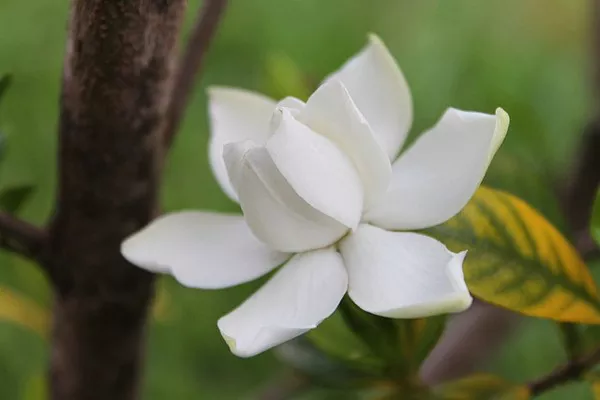The natural world is a canvas painted with the vibrant hues of wildflowers, each species exhibiting its unique beauty during specific times of the year. For enthusiasts and nature lovers, understanding the blooming patterns of wildflowers is akin to unraveling a botanical calendar. In this article, we will delve into the fascinating realm of wildflowers, exploring the diverse months in which they grace us with their breathtaking bloom.
Spring Symphony:
As the chill of winter gradually gives way to the warmth of spring, a botanical symphony unfolds across diverse landscapes. March, heralding the official arrival of spring, marks the beginning of the wildflower spectacle in many regions. In temperate climates, crocuses and snowdrops often steal the show, their delicate blossoms bravely pushing through lingering frost.
As April unfurls, wood anemones, violets, and primroses carpet woodland floors, transforming them into magical realms. Bluebells emerge in shaded glades, creating a sea of violet-blue that captivates the eye. Meadows burst into life with the cheerful blooms of daffodils and tulips, while cherry blossoms grace the branches of trees, signaling the season of renewal.
May is a crescendo of colors as fields and hillsides become adorned with an array of wildflowers. Poppies, buttercups, and forget-me-nots mingle with the verdant grass, creating a mesmerizing tapestry. As spring progresses, the landscape undergoes a remarkable transformation, and the air is filled with the sweet scent of blossoms.
Summer’s Palette:
The transition from spring to summer sees the baton passed from one set of wildflowers to another. In June, the floral tapestry continues to evolve as the weather warms. Daisies, foxgloves, and ox-eye daisies take center stage in meadows and along country lanes. Vibrant blooms attract pollinators, turning these areas into bustling ecosystems.
July and August are peak months for wildflower diversity. Blanket flowers, coneflowers, and black-eyed Susans paint prairies with their warm hues, while asters and goldenrods bring a splash of color to late summer landscapes. Wetlands and marshes become adorned with the regal presence of water lilies and irises, adding to the rich botanical tapestry.
Late Bloomers and Autumn Elegance:
While many associate wildflowers with the vibrant months of spring and summer, some species prefer to showcase their beauty in the cooler days of autumn. September and October bring forth the late bloomers, such as asters, chrysanthemums, and goldenrods. These autumnal wildflowers add a touch of elegance to the fading greenery, signaling the impending arrival of winter.
In more arid regions, where summers are harsh, wildflowers often wait patiently for the cooler temperatures of autumn to burst into bloom. The desert landscapes of the American Southwest, for example, come alive with the vivid colors of asters, marigolds, and desert mariposa lilies during this season.
Regional Variations:
The blooming periods of wildflowers are not uniform across the globe. They vary significantly based on geographic location, climate, and elevation. In alpine regions, for instance, wildflowers may bloom later in the year due to the persistence of snow cover. Conversely, in lowland areas with milder climates, certain wildflowers may bloom earlier and have extended flowering seasons.
In the Southern Hemisphere, where seasons are reversed, the blooming periods of wildflowers align with the spring and summer months in the Northern Hemisphere. Australia, known for its diverse flora, experiences a spectacular wildflower display in regions such as Western Australia, where expansive fields of everlastings and wattles create an awe-inspiring spectacle.
Conservation and Enjoyment:
Understanding the blooming periods of wildflowers not only enhances our appreciation for the natural world but also plays a crucial role in conservation efforts. Many wildflowers are sensitive to changes in climate, and their blooming patterns can serve as indicators of environmental health. Monitoring these patterns allows researchers and conservationists to track the impact of climate change on plant ecosystems and implement necessary measures for protection.
For those who revel in the beauty of wildflowers, planning outings and nature walks based on the blooming calendar adds an extra layer of enjoyment. Botanical gardens, nature reserves, and designated wildflower areas offer opportunities to witness the diversity of blooms throughout the seasons. Nature enthusiasts can engage in citizen science projects, contributing valuable data on wildflower sightings and blooming periods, which aids in broader ecological research.
Conclusion:
The blooming periods of wildflowers unfold like chapters in a botanical novel, each month bringing forth a new cast of characters and a fresh burst of color. From the delicate blossoms of early spring to the robust blooms of summer and the elegant displays of autumn, wildflowers enchant us with their ephemeral beauty. Understanding the intricate dance of nature’s floral calendar allows us to connect more deeply with the natural world and underscores the importance of preserving these delicate ecosystems for generations to come.


